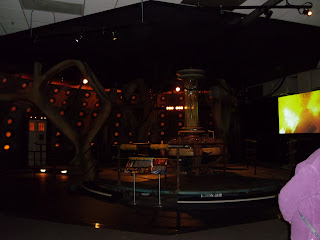So environments? After starting shooting for my music video to 'find your way' today (my single with Lacky C & Duv) I've actually had to think quite carefully about environment today. Environments, in games support the characters and gameplay and are one of the most immersive parts of a game. In some games it can be the shellshocked deserts of Afganistan, in others the colourful simplisitc areas of the Johto region (Pokemon), In our video today it was the Saff streets and the graffiti outside Goldhill park...why? to give the 'hard' attitude of a rap music video.
Films make envionments all the more easy to evaluate and in critical studies we looked at the influences of Edward Hopper on Dark city. Similar to the simple devices I talked about in the character blog, this used the same dreary colour palette of Hopper to convey a grim, ill picture of WW2 America. The city in Dark City is described by Higley as a "murky, nightmarish German expressionist film noir depiction of urban repression and mechanism".
 |
| A comparison of the opening shot from Dark City and the works of Edward Hopper, just so you can clearly see the similarities in the colour palette. |
 |
| Pictures from the Doctor who experience, London Olympia. The David Tennant/Christopher Ecclestone TARDIS compared to the 1970's version. |
Following on from the Art Direction Blog, I also have some pictures from the exhibition showing the art direction offices at the BBC that make Dr Who. They show just how much it takes to get a character or environment sorted:
 |
| Pictures I took from the Doctor Who experience showing the BBC offices used for art direction. |
Now let's look at the basis of an environment within a game. I'm looking at Inception.
Now the film is amazing, and if you haven't seen it i would totally recommend it. But what would we do with it if we wanted to make it into a game? An article from World of level design.com explains just how inception is a game level designer's dream:
"Throughout the film words such as architect, creating levels, worlds, creating boundaries (closed loops) for believable worlds and designing layouts are discussed in Inception."
"Many things in Inception directly relate to level design and creating game worlds. Here is what I learned in Inception about creating worlds.
- As a level designer you have a chance to build worlds, to design levels. You create a world out of an idea, a single thought you have in your mind. Simple idea becomes something tangible for someone else to experience. Player has a chance to explore your creation. Something that started as a simple idea in your mind can become a game world. Do not ignore a simple idea of a world you want to create.
- Continuously create. Never stop creating. Always design and build something new.
- Design with story in mind. Make sure the player has an objective you want them to fulfill. Make it clear, make it interesting.
- The world you create is about visuals and emotion. The feeling you want the player to experience, reinforced by the visuals.
- Never create from memory. Always use reference to create worlds. Use your memory to communicate the feelings of spaces and environments you've been to, but when designing use reference to make the world believable."
Sound familiar? I can pretty much hear Chris reading this! (My Visual Design lecturer for those who don't know). Fully reading this text aligns all the major factors of creating an environment or level, or anything for that matter. Idea, Create,Story,Emotion and Reference are the first tools in creating a believable environment. I mean would you dream of tackling modelling a character without decent reference? this is just like the Edward hopper comparison that was used as reference to create the dark city world. And just look at all the reference and hard work behind the Dr Who designs...
Ultimately, environments screw with our emotions...just like the adverts on tv. They add to the overall feelings we feel - like an artists dummy they bend us with their use of colour, smell and style.
Later,
PS: the audio 'Find your way' is on youtube: http://www.youtube.com/watch?v=jxAg8uiy4JE
full video coming soon :D



No comments:
Post a Comment